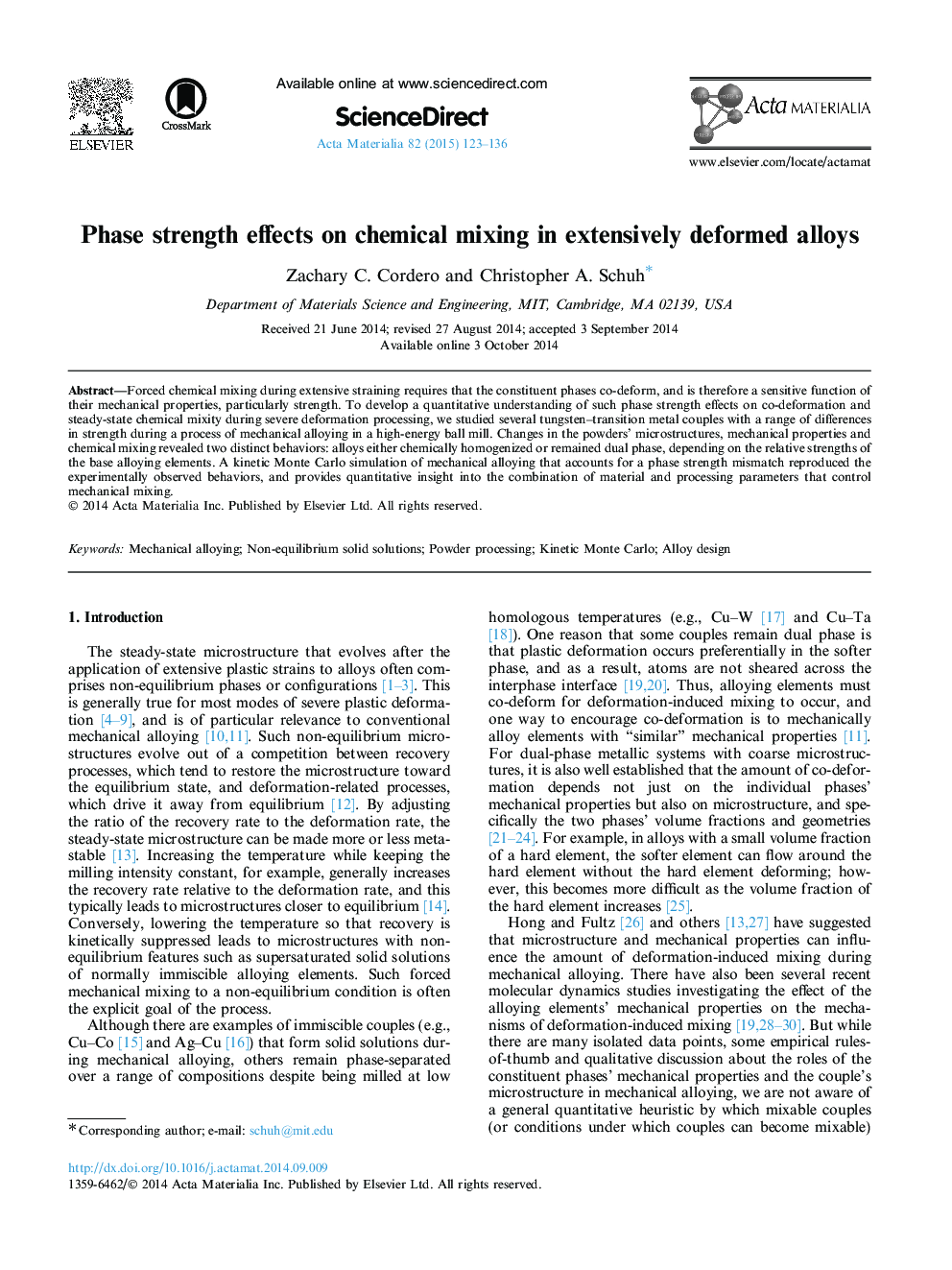| Article ID | Journal | Published Year | Pages | File Type |
|---|---|---|---|---|
| 1445508 | Acta Materialia | 2015 | 14 Pages |
Forced chemical mixing during extensive straining requires that the constituent phases co-deform, and is therefore a sensitive function of their mechanical properties, particularly strength. To develop a quantitative understanding of such phase strength effects on co-deformation and steady-state chemical mixity during severe deformation processing, we studied several tungsten–transition metal couples with a range of differences in strength during a process of mechanical alloying in a high-energy ball mill. Changes in the powders’ microstructures, mechanical properties and chemical mixing revealed two distinct behaviors: alloys either chemically homogenized or remained dual phase, depending on the relative strengths of the base alloying elements. A kinetic Monte Carlo simulation of mechanical alloying that accounts for a phase strength mismatch reproduced the experimentally observed behaviors, and provides quantitative insight into the combination of material and processing parameters that control mechanical mixing.
